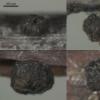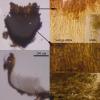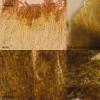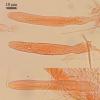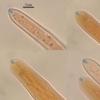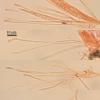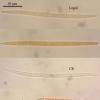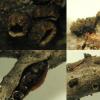
19-04-2015 20:20
Hi again Could you help me with this paper? NANN

30-04-2024 16:22
François BartholomeeusenDear forum members,On April 25 2024, I found one f

03-05-2024 18:04
 Riet van Oosten
Riet van Oosten
Hello, Found by Laurens van der Linde on Rubus fr

01-05-2024 23:22
Ethan CrensonHi all, Found late last week in a New York City p

29-04-2024 21:32
 Robin Isaksson
Robin Isaksson
Hi! Found in Sweden. Ascomata with haris, se

01-05-2024 12:54
F. JAVIER BALDA JAUREGUIHello, everyone.An idea for this pyreno, I found u

30-04-2024 19:43
Gernot FriebesHi!We observed this hyphomycete growing between le
Apos deep-cupulate (with small pore when young), sessile or with short stipe, up to 0,7 mm in diam, single, without stroma, bursting through the bark of twigs; outer surface coriaceous, dark brown, radially splitted when overmature, hymenium grayish.
Excipulum from textura prismatica, at the base amorphous, almost black, easily crashed when tapped, in mid-length from brown prismatic cells 10-15 x 7-9mk, in collar (part exceeding hymenium) from two layers: external layer from brown textura prismatica, internal layer from textura oblita-gelatinosa, inner hyphae covered by warts to 2 mk high; medulla from textura porrecta, hyphae parralel to flanks, not conspicuous; asci cylindrical, enlarged in mid-length, with short stalk and clamp, with amyloid pore (KOH, lugol), 80-107 x 8,3-12,2; paraphyses filiform (1 mk),not ecxeeding the asci, septate, rarely branched, upper part slightly enlarged (2 mk), with some gelatinose encrustation; spores needle-shaped, with obtuse and acute ends, up to 7-septate, often start to germinate from upper end, 56 (46-66) x 2,6 (2-3).

I will send you Groves discussion on G. cassandrae and G callunigera so you can make your own decision, both species are unknown to me.
Stip
i think that it is G. cassandrae f. cassandrae. I've microscopied one more specimen, did more measurements of asci and spores.
There they are: asci 75-120 x 6,8-9,9 (N=20); spores 59 (48-71) x 2,5 (2-3,2) (N=30).
It is only about the first specimen, and i have no collection of the second (only photo of apothecia and some microphoto, where spores not showed well). So, i can't measure the second specimen and think it is impossible to say anything about species. Groves (1965) reportes that both species (G. callunigera f. cassandrae and G. cassandrae f. cassandrae) could be found on this substrate. Callunigera must have smaller spores, and mine just in range of G. cassandrae.

thank you very much for sharing your conclusion.
Stip
